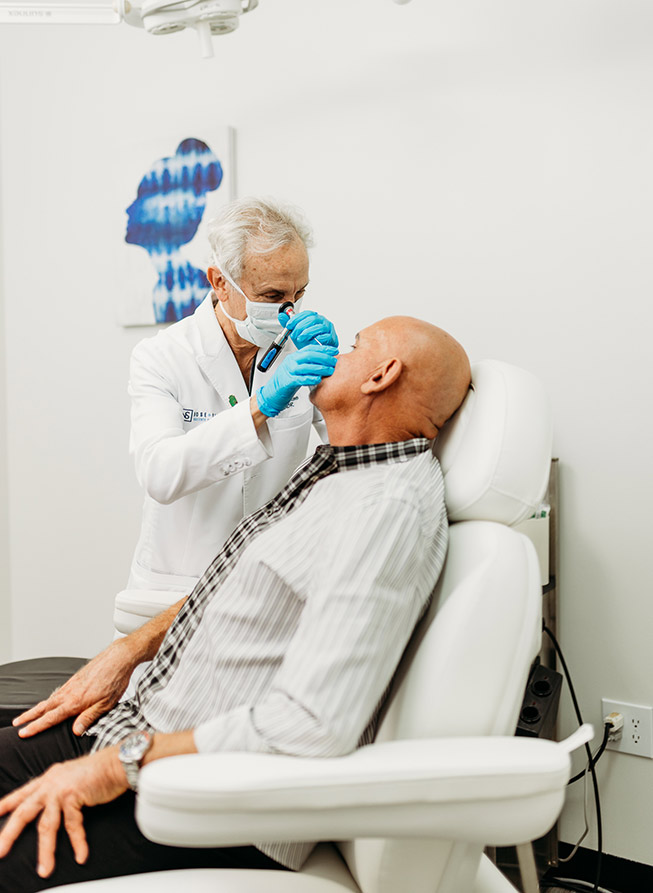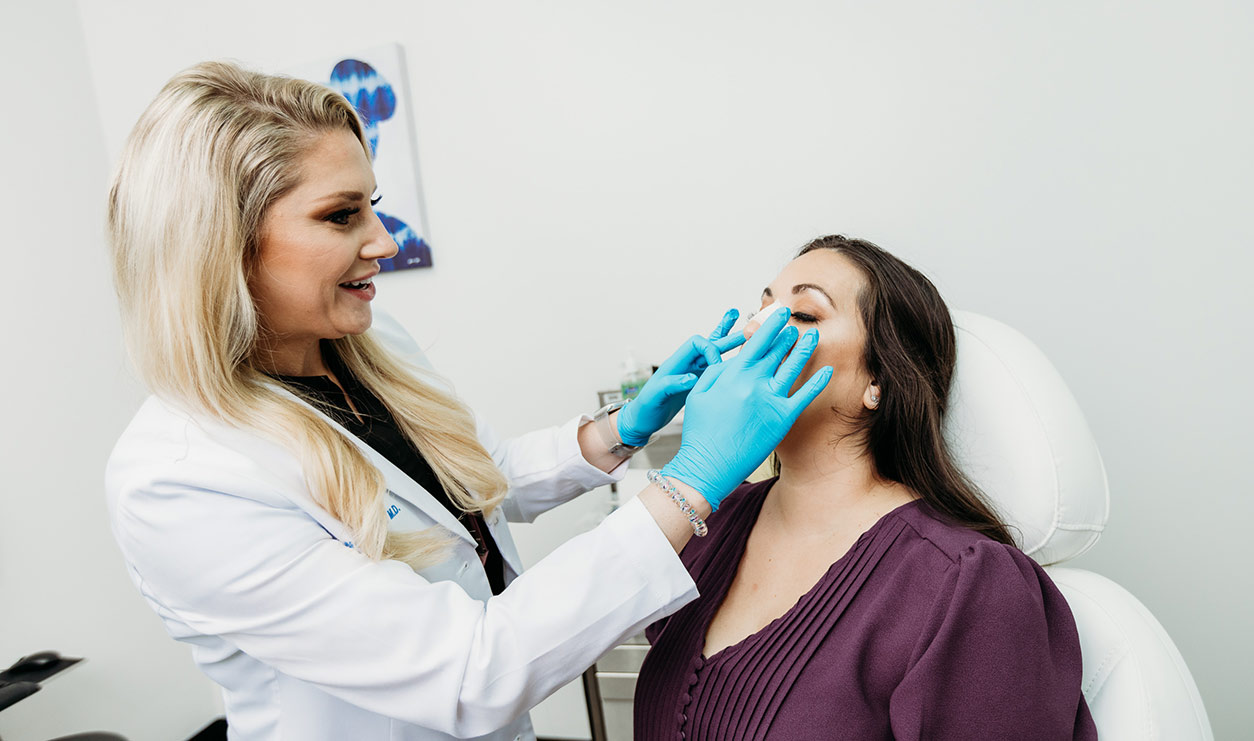
At the Nose and Sinus Institute of Boca Raton, we offer a groundbreaking solution for individuals suffering from chronic sinus congestion and breathing difficulties – balloon sinuplasty. Our experienced team, led by award-winning double board-certified surgeon Dr. Nathan Nachlas, includes Dr. Melyssa Hancock, and Dr. Diana del Valle. Together they are dedicated to providing advanced and effective treatments that enhance both the function and comfort of your nasal and sinus passages.
Many of the techniques currently used to address chronic rhinosinusitis were pioneered by Dr. Nathan E. Nachlas who performed the first computer-assisted balloon sinuplasty in the United States at the Nose and Sinus Institute of Boca Raton.
Balloon sinuplasty is a cutting-edge, non-invasive procedure that revolutionizes the treatment of chronic sinus issues. Traditionally, sinus problems have been managed through more invasive methods, but our approach involves a minimally invasive technique using a specially designed balloon to restore proper sinus drainage and alleviate congestion. It involves gently expanding the sinus openings using a small balloon, effectively clearing blocked passageways and alleviating nasal congestion, headaches, facial pressure, discolored nasal drainage, and sinus flare-ups.

Similar to balloon septoplasty, the balloon sinuplasty procedure is performed in our office under general anesthesia or conscious sedation, avoiding the need for a trip to the operating room. Our specialized procedure involves these key steps:
Our skilled surgeons will carefully assess your condition to determine the best course of action when considering your candidacy for balloon sinuplasty, including:
Dr. Nachlas resolved this patient’s persistent sinus issues when it became clear that using pain medication for more than eight years had yielded no positive results. The patient experienced quick improvement in breathing and overall well-being with minimal recovery time.

Balloon sinuplasty recovery is remarkably fast and comfortable. Following the procedure, patients can anticipate a brief period of mild discomfort, fatigue, and minimal swelling. Our expert surgeons provide comprehensive recovery care guidelines to ensure optimal healing and a favorable outcome. While some temporary restrictions on strenuous activities are advised, most individuals can resume their daily routines within a short time frame. Pain is generally minimal, and any prescribed medications can help manage any discomfort that may arise.
Unlike more invasive procedures, this procedure’s minimal impact allows for a speedier return to your daily routine. Our commitment to your well-being extends beyond the procedure, ensuring that your recovery process is as smooth as possible.
The balloon sinuplasty procedure offers a range of benefits for individuals dealing with sinus-related issues:
Selecting a skilled board-certified surgeon with expertise in nasal procedures significantly reduces potential balloon sinuplasty risks and complications. These risks and complications may include:
When you choose the Nose and Sinus Institute of Boca Raton, you’re selecting a team of specialists who are at the forefront of minimally invasive procedures for the face, nose, and sinuses. With a proven track record of surgical excellence and a commitment to delivering exceptional care, our institute has been serving the Boca Raton community since 1987.
Conveniently located in Boca Raton, our ENT doctors serve Boca Raton and all surrounding communities in Palm Beach and Broward Counties
While traditional sinus surgeries often involve more invasive techniques and longer recovery times, balloon sinuplasty is a minimally invasive procedure that focuses on reshaping the sinus passages through balloon inflation. This approach allows for a quicker recovery and reduced discomfort.
The actual procedure is often completed within an hour, and balloon sinuplasty recovery is swift. However, this timeframe can vary based on individual circumstances and the extent of treatment required.
Balloon sinuplasty can indeed be a viable option for pediatric patients dealing with chronic sinus problems. It offers a less invasive alternative to traditional sinus surgeries, making it a potential choice for children who require relief from sinus-related symptoms. Our experienced surgeons will assess each case and determine the most appropriate treatment approach for your child’s unique needs.
Balloon sinuplasty can be seamlessly combined with other functional nasal treatments to comprehensively address various nasal issues during a single session. This approach ensures a more effective and efficient treatment experience.
Balloon sinuplasty cost can vary depending on factors such as the complexity of your sinus issues, any additional procedures performed, and your insurance coverage. Our team can provide you with a detailed cost estimate after assessing your specific condition and treatment plan.
Take charge of your life today! Call us or submit an online form, and you will be speaking with one of our talented surgeons in no time.
(561) 939-7352